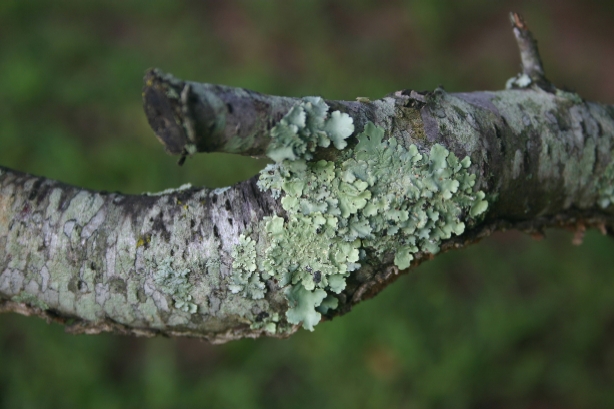Georgia Gardener Newsletter
Ask An Arborist: November 20, 2012
Jackie from Bethlehem emailed:
I have some fruit trees in my sunny yard. They have some type of fungus or moss growing on the trunk and branches that is killing them.
Is there anything that I can spray on them to help? This started appearing about a year ago.
What you actually have growing on your trees are lichens. Lichens are actually two different organisms living
communally, or as we say, they have a symbiotic relationship. Lichens are comprised of an algae (occasionally
a cyanobacterium) and a fungus in an almost marriage-like arrangement. The algae (or cyanobacterium), which has chlorophyll,
produces sugars through photosynthesis which it
shares with the fungus. In return, the fungus provides a protective outer layer to keep the algae moist. It is really a remarkable
relationship in nature.
Because lichens need sunlight in order to perform photosynthesis, they can be found adhering to a wide variety of surfaces. I'm
sure you've seen lichens on rocks, bare soil, dead stumps and in your case, living trees. Lichens act as epiphytes in that they
derive their moisture and nutrients from the air, rain and any water that splashes them and not from the plant upon which they
are attached.
Lichens are quite beautiful and can be found in many different colors. In the left image below, there are at least three different
lichens growing on this rock. One is a much darker
gray and has a fuzzy appearance versus the lighter and flatter lichen nearby. A third gray-green lichen is also present. The rock
on the right has a bright cinnamon-colored lichen mixed in with others that are gray-green.
I have seen lichens that were yellow-green, bright orange, gray, etc. Lichens also classified by their physical appearance:
Crustose: very flat - almost as if they were painted on a surface
Filamentous: look like strands of hair
Foliose: look like leaves (foliage)
Fruticose: have a branched appearance - some look like miniature trees or shrubs
Gelatinous: these are jelly-like
Leprose: have a fuzzy or powdery appearance
Squamulose: have a scaly appearance
Lichens can be very long-lived, live in extreme environments and be good indicators of air quality. Many suffer in areas with
high amounts of air pollution.
On plants, lichens seem to particularly like apple, flowering pear, crabapple, peach, crape myrtle and azalea.
As for the problems with your fruit trees, something else is causing their decline thus allowing
more sunlight, air and rain to reach the lichens. You will need to send us additional information so that we can try to
pin down the real cause of the problem. Once plants become healthy again, the lichens diminish.
Don't try to remove lichens from plants. The damage caused by the action of scraping them off is harmful to the plant's bark.
Please email me if you have any questions or topics you would like to submit
for later articles.
Unless otherwise noted, Images & Drawings Copyrighted © 2012 by Theresa Schrum - All rights reserved



